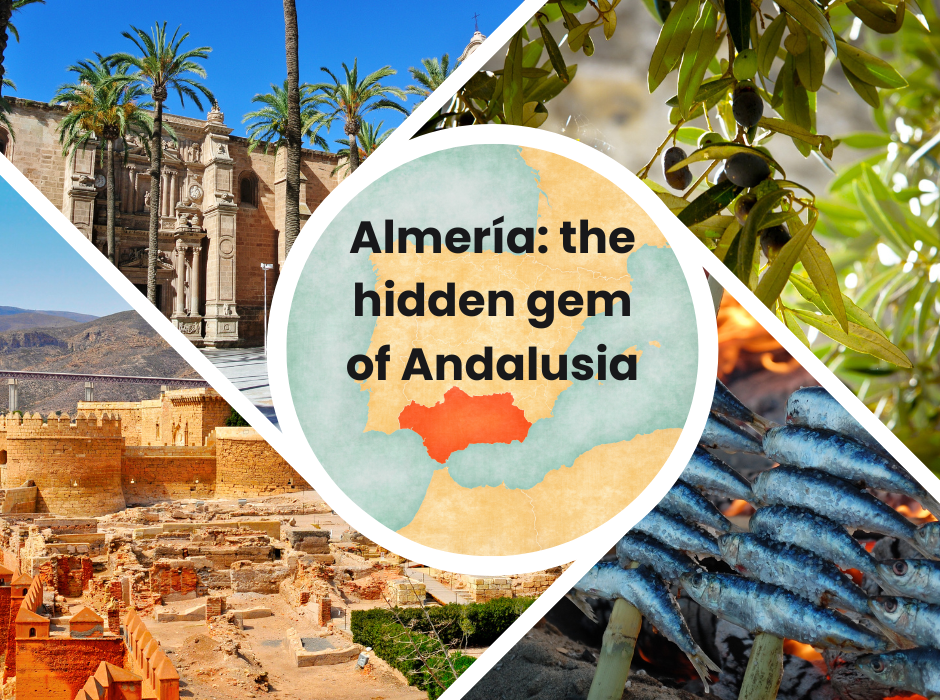Almería, one of Spain’s sunniest cities, is located on the Mediterranean coast and offers a unique blend of history, natural beauty and cultural experiences. Although less well known than Seville or Granada, Almería is a secret treasure waiting to be discovered. The city’s long sandy beaches, impressive Moorish fortifications and desert landscape create a special atmosphere that makes it unique compared to other regions of Andalusia.
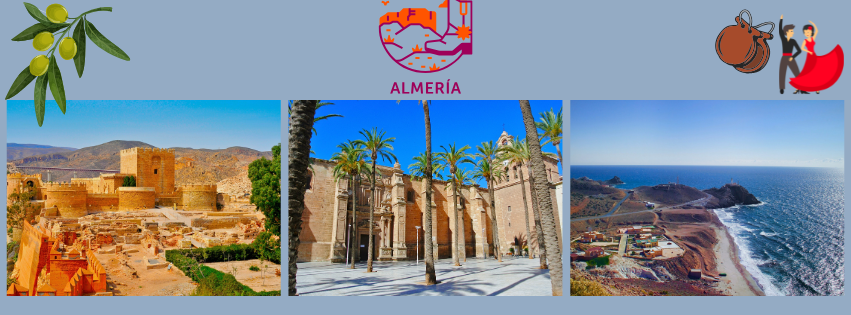
History of Almería
The history of Almería goes back thousands of years. After the ancient Phoenicians and Romans, the city flourished under Moorish rule. In the 10th century, the Arabs developed it into a strong port city, and it was then that the Alcazaba, one of Spain’s largest fortifications, was built. After the Catholic reconquest, Almería’s importance declined, but in the 19th century it boomed again thanks to mining and trade. Today, the city’s historical and natural heritage makes it a popular destination.
Places to visit in Almería
Alcazaba de Almería – The construction of this fortified citadel was ordered in the second half of the 10th century by the Caliph Almohad, also known for the construction of the famous Medinat Al-Zahara near Córdoba. After the fall of the Caliphate of Córdoba, Almería took over the central role of the region, and the Alcazaba was of great importance both defensively and strategically. The monumental fortress is perched on a hilltop, offering a magnificent view of the city and the sea. Visitors can reach the entrance via a steep ramp, which is now the Torre de la Guardia (Watchtower), while the main entrance during the Nasserid rulers was the Puerta de la Justicia. One of the most spectacular points of the fortress is the Torre de los Espejos (Mirror Tower), which offers a stunning panorama of the Bay of Almería. Within the walls of the Alcazaba is the Castle of the Catholic Monarchs, one of the most interesting parts of the fortress, with its unique towers and unrivalled views. This historic building is not only a testimony to its former military and political importance, but also reveals to visitors the cultural layers that have been built up over the centuries.
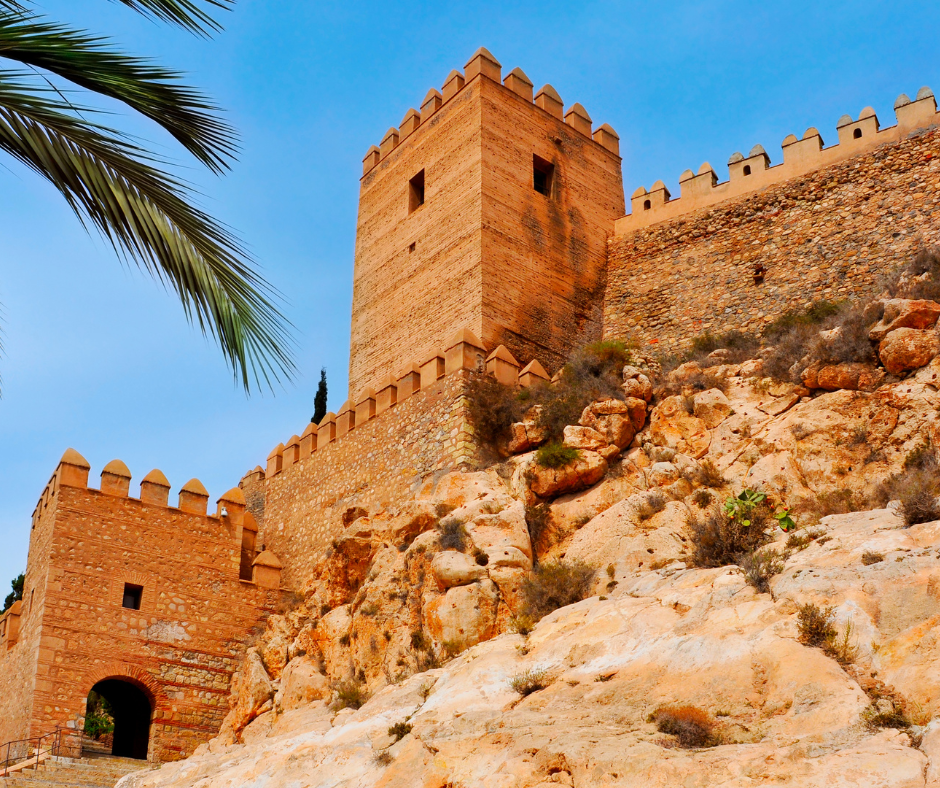

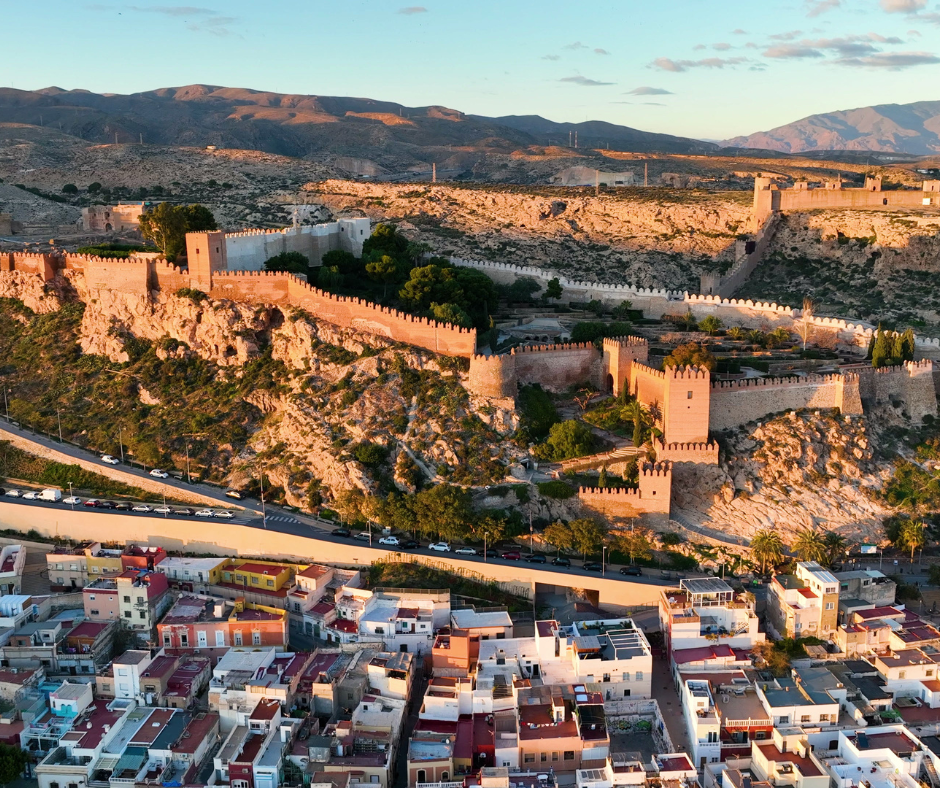
Catedral de Almería -a monumental cathedral that is a unique example of 17th century cathedral architecture. The building had a dual function: it served as a place of worship and its massive, thick walls provided protection against barbarian pirate attacks. It is the only surviving fortified cathedral in Spain from this period, and its battlements and artillery turrets are still visible today. Construction began after the devastating earthquake of 1522, after the Catholic monarchs had recaptured the city. As a result, the population gradually settled around the new church. The building combines several architectural styles: the interior has Gothic features, with imposing high arches and a ribbed ceiling. The church has three naves and a chapel, while the façade and some of its elements also show neoclassical architectural features. Today, the square in front of the cathedral is a wide, palm-lined pedestrian street, which provides a pleasant place for visitors to admire the imposing sight of the building.
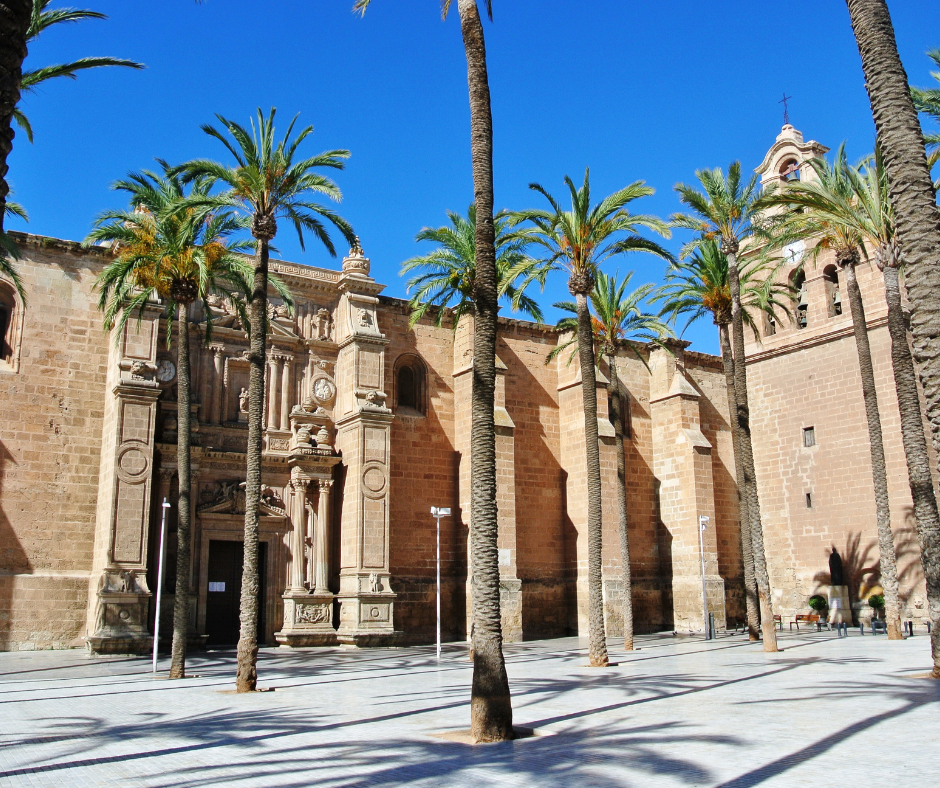
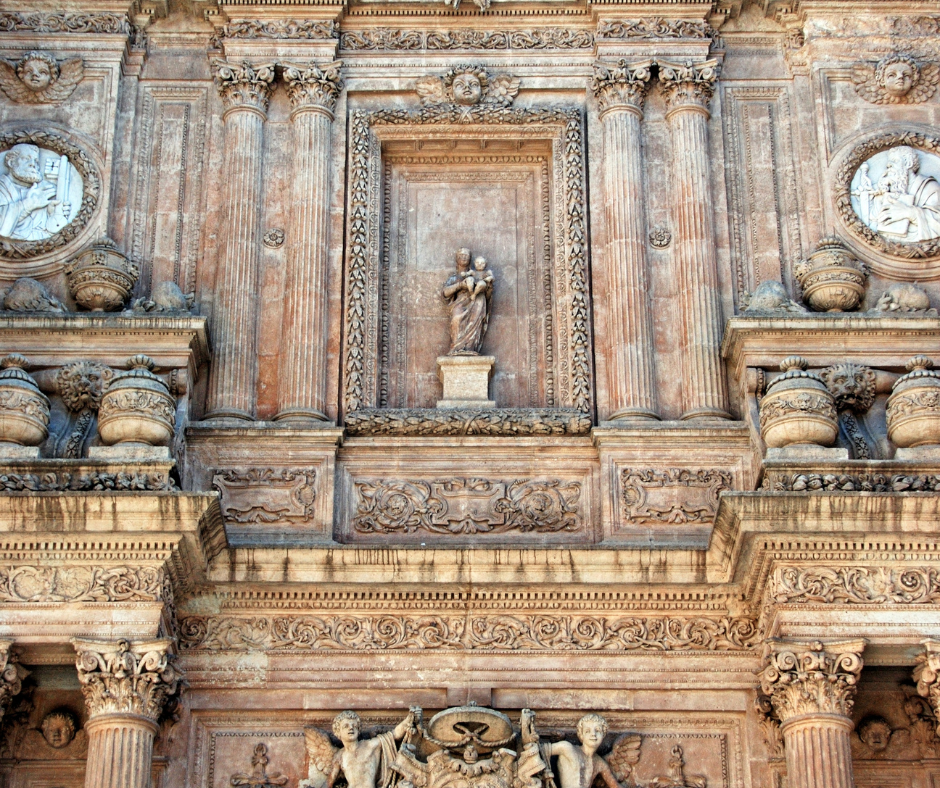
Arab cisterns: the Aljibes Arabes is significant because in the Muslim era the city had no piped water supply, so bathing facilities and washing tunnels were needed. Thus, a water pipeline was built from the Alhadra springs to the (now) highest point, the Puerta de Purchena, and a number of public cisterns were built to supply water to the city during the siege. Of these, 3 interconnected cisterns survived for many years, but by the 1960s only one remained. Its site has been restored as an exhibition centre. It can be visited free of charge on Calle Tenor Iribarne.
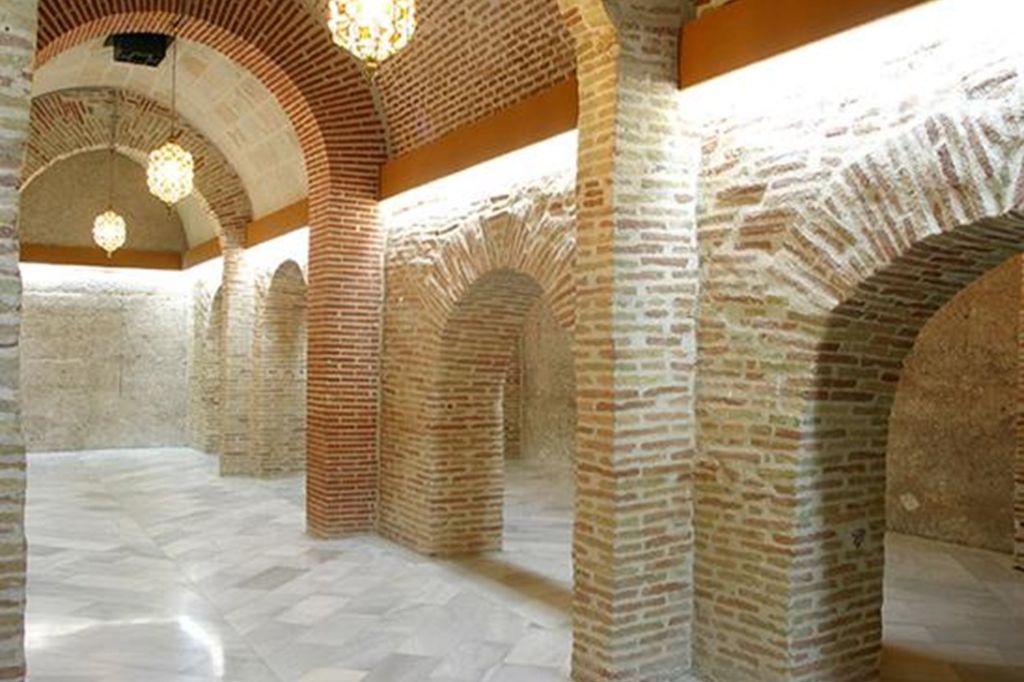
Puerta Purchena fountain: one of the symbols of Almería, the Puerta Purchena fountain is a traditional column from the 19th century, with three small basins emerging from the hexagonal column fountain, which was also used as a trough.
Barrio de La Chanca – A district of colourfully painted cave dwellings, offering a unique insight into traditional life in Almería.
Places to visit in Almería
Cabo de Gata-Níjar Natural Park (about 30 km from Almería). The park is home to a number of hiking trails offering beautiful views of the Mediterranean Sea. Discover picturesque coves such as Playa de los Muertos and Playa de Monsul, ideal for swimming and diving. Nature lovers will also enjoy the area’s diverse wildlife, including flamingos and other water birds.
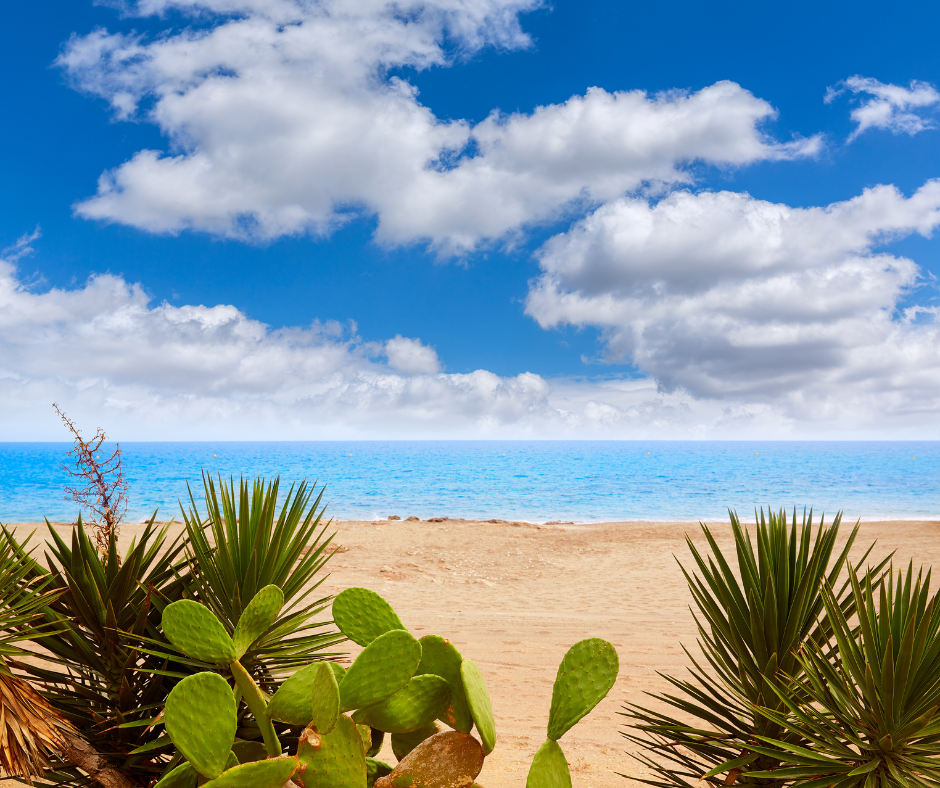

TIP: cabo-de-gata-nijar-natural-park
Tabernas Desert (about 30 km from Almería): Europe’s only desert, known for its unique, barren landscape and the many famous western films shot here. Film classics such as Good, Bad and Ugly were shot here, as well as scenes from Game of Thrones. In the middle of the desert is the Mini Hollywood theme park, a replica of a modern-day Wild West town with interactive shows and displays. The area’s unique natural features make it a popular destination for photographers and adventure seekers.
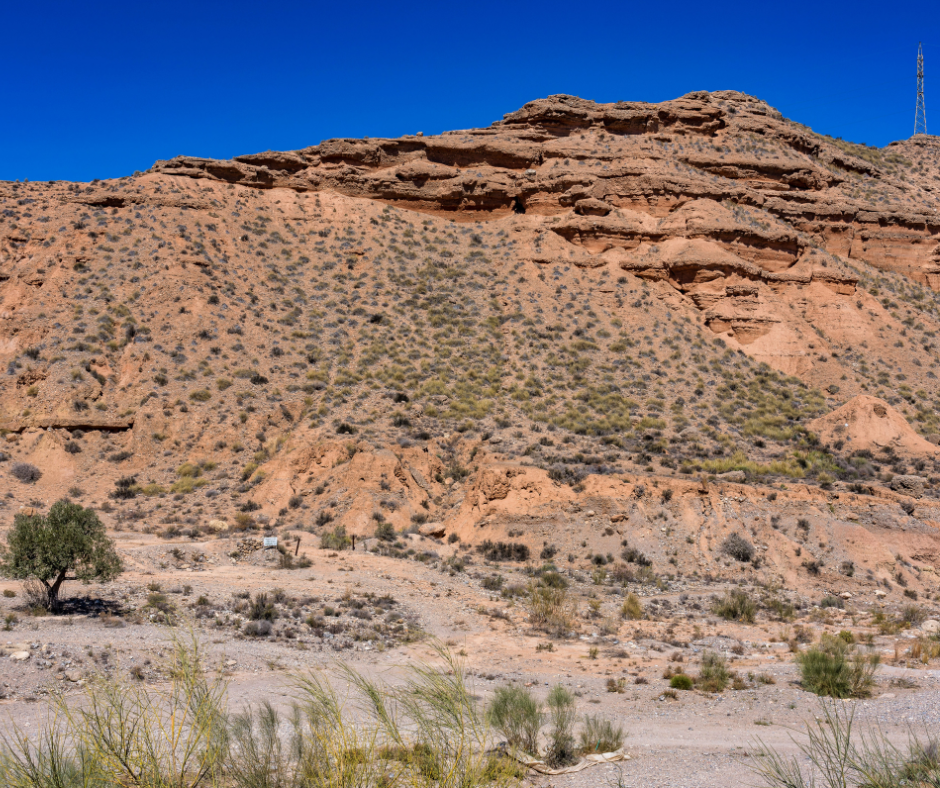
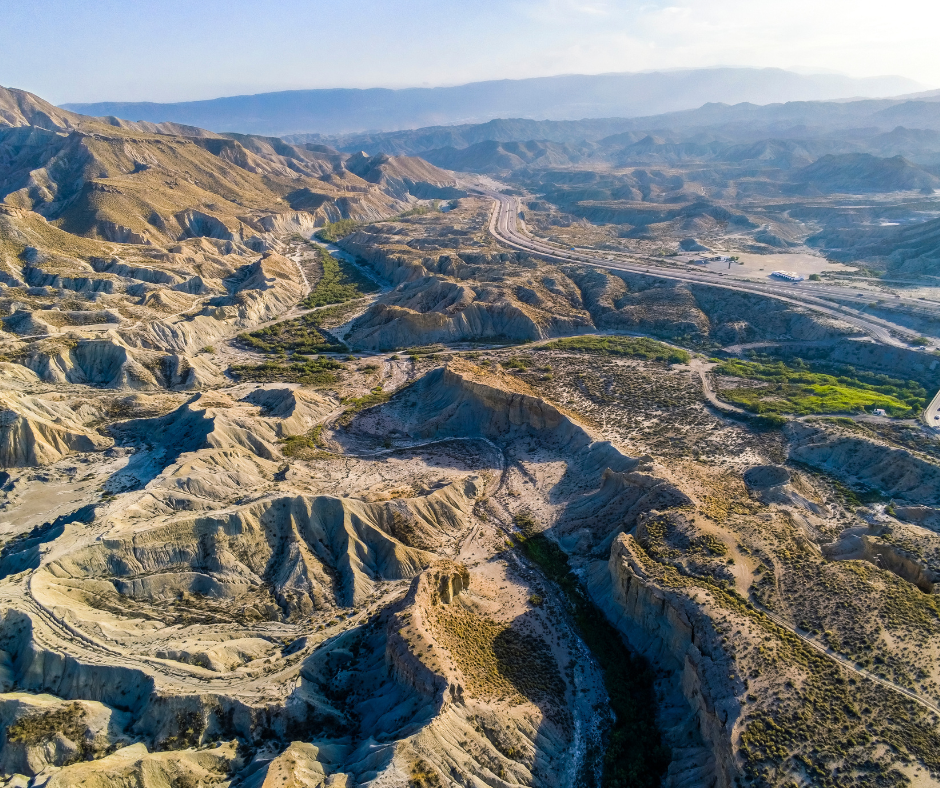
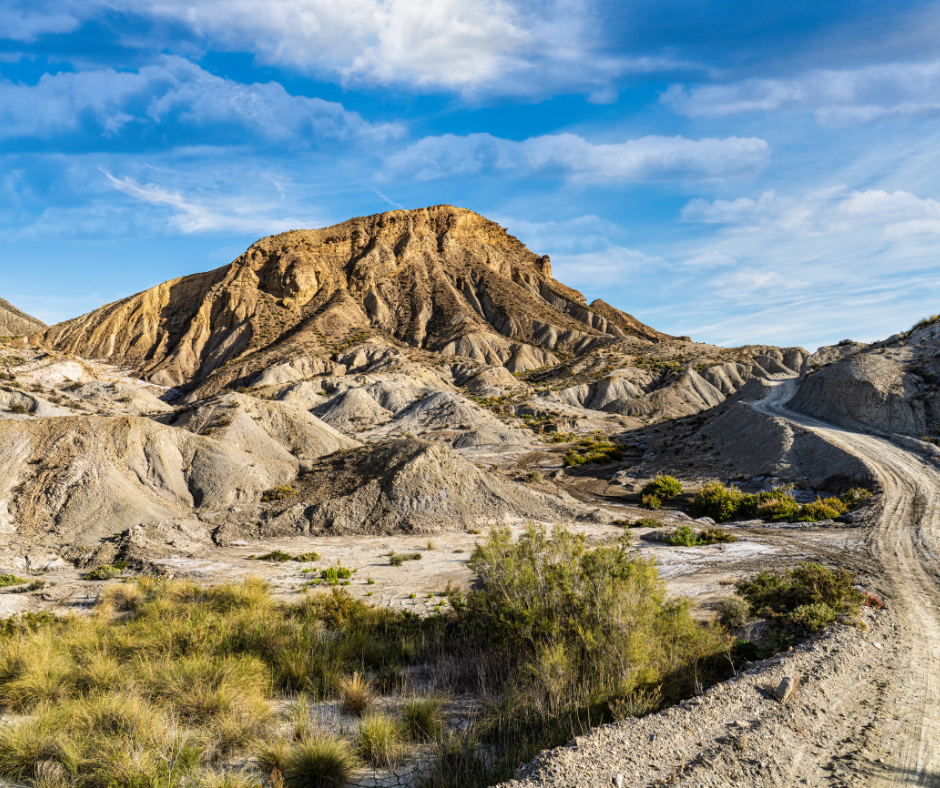
Mojácar (about 90 km from Almería): an enchanting whitewashed village built on a hilltop with breathtaking views of the sea and surrounding mountains. The village’s narrow cobbled streets, traditional Andalusian houses and flower-decked terraces are a picturesque sight. One of the special features of Mojácar is its artistic community, with numerous galleries and craft shops. Mojácar Playa, on the coast, offers long sandy beaches and a variety of cosy restaurants.
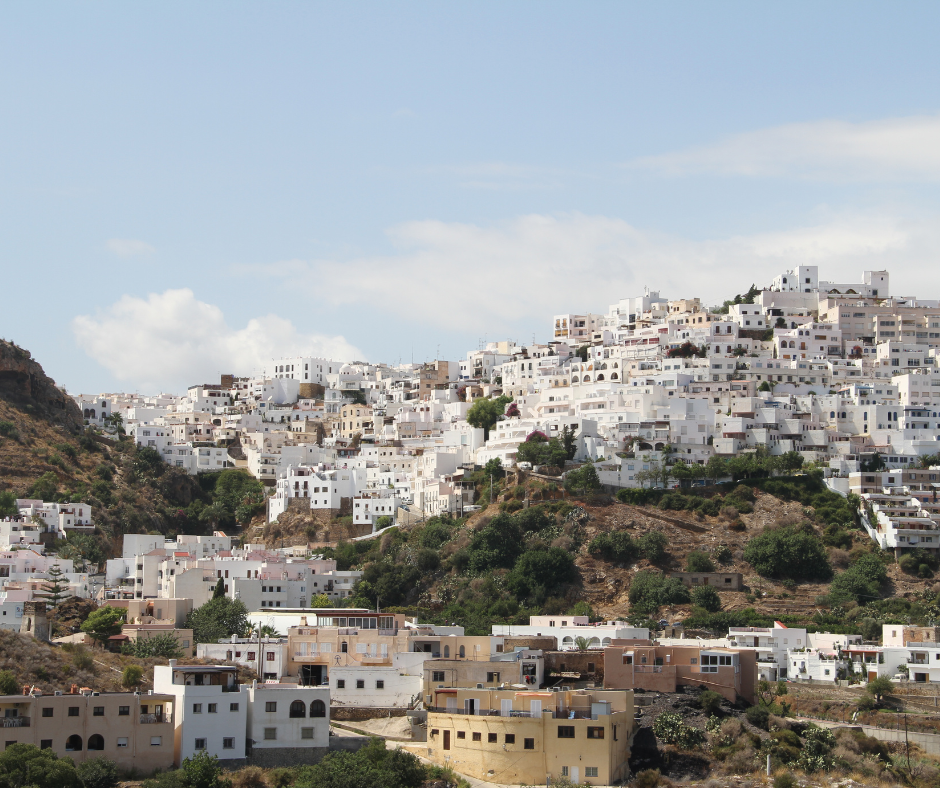
The Caves of Sorbas (about 60 km from Almería): located near Sorbas, Cuevas de Sorbas is a spectacular limestone cave system known for its unique stalactite formations and underground waterways. The caves offer guided tours, with a choice of different levels of difficulty – from easy walking tours to more adventurous caving experiences through narrow passages. A special feature of the cave system is the unique gypsum crystal formations.
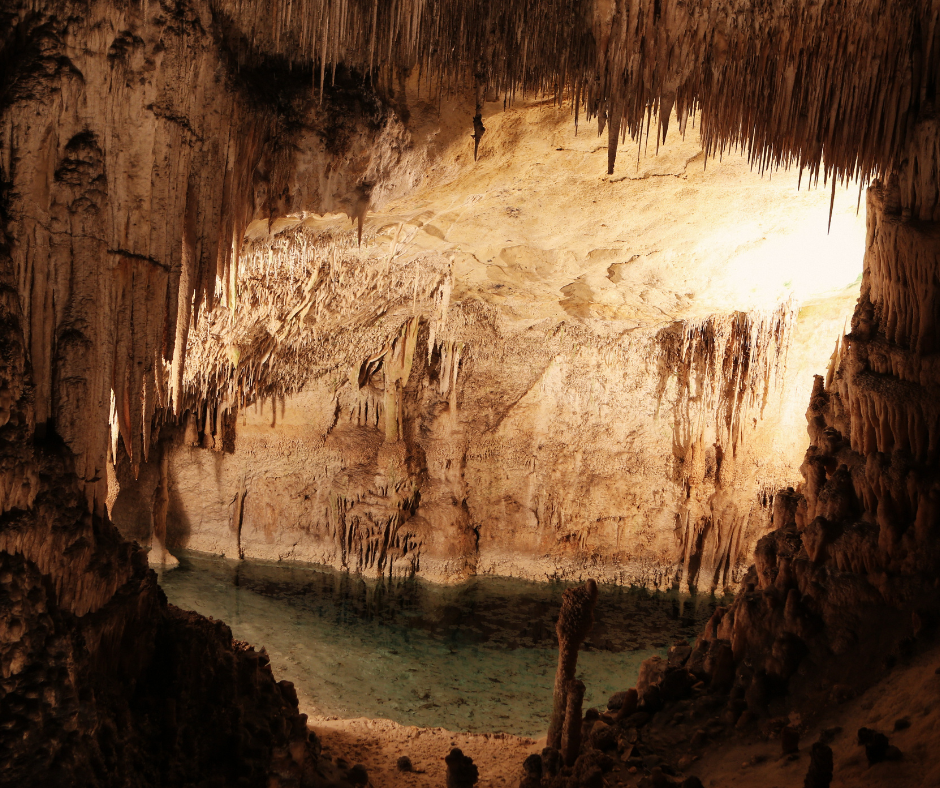
Almería’s gastronomy is deeply rooted in Andalusian tradition, combining ingredients from the sea and the land. The region is renowned for its varied cuisine, fresh seafood, quality olive oil and typical local wines.
Almería is one of the most important olive oil producing regions in Spain, particularly through the olive groves of the Almanzora Valley and the Sierra de los Filabres. The local extra virgin olive oils are of outstanding quality, low in acidity and with an intense fruity flavour. The ‘Aceite de Oliva Virgen Extra’ (AOVE) is often an award-winning product, which is also worth trying at local markets and olive oil tasting sessions. You can read more about it here

Almería is a place where history, nature and culture come together in perfect harmony. Whether it’s a historic stroll in the Alcazaba, a relaxing sunset on the Cabo de Gata beach, or an adventurous excursion in the Tabernas desert, Almería has something special for every visitor


